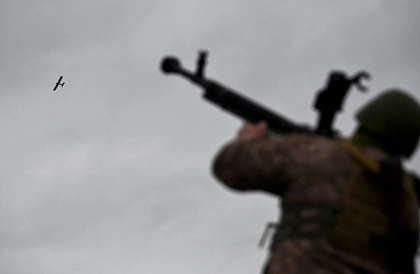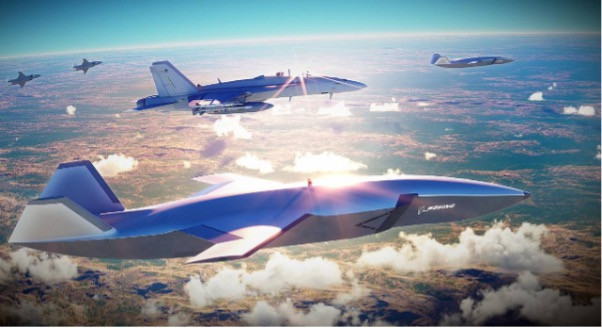The U.S. Air Force has been discussing a joint combat aircraft (CCA) program since the early 2000s. CCA uses artificial intelligence (AI) to operate in a collaborative team with the next generation of manned combat aircraft.
The success of unmanned aerial vehicles (UAVs) as force multipliers in Ukraine has given new impetus to plans aimed at supplementing fighter and bomber fleets with cheaper AI-guided unmanned aerial vehicles.
According to the Wall Street Journal, the U.S. Air Force plans to produce about 1,000 AI-powered unmanned combat aircraft over the next five years. The unmanned aircraft will initially function as a “wingman” to complement, protect, and support manned combat aircraft, primarily the fifth-generation F-35 fighter jet.
Jet-powered drones can replicate all the operational tasks of traditional aircraft, including reconnaissance, as well as attack both air and ground targets. Given the rising cost of modern aircraft, the hope is that drones will allow us to use more aircraft for less money. The Pentagon estimates that its most capable unmanned aircraft will cost about one-third as much as a comparable fighter jet, with additional savings in pilot training costs.
Still, the first phase of the program alone is expected to cost about $6 billion. Current candidates to win the Pentagon contract are Anduril Industries’ Fury, Boeing’s MQ-28A Ghost Bat developed in conjunction with the Royal Australian Air Force, and General Atomics’ Gambit. ” and have already developed a prototype of the proposal. .

Other interesting topics
Ukraine destroys 38 of 42 drones launched by Russia overnight
The attack came five days after a drone struck an apartment building in Odesa early Saturday, destroying multiple floors and killing more than a dozen people under the rubble.
The other leading candidates, along with Northrop Grumman, have yet to reveal their aircraft designs. Lockheed Martin is working on human-machine pairing technology through Project Carrera, and Northrop Grumman is working on AI as part of the U.S. Army’s Future Tactical Unmanned Aircraft Systems (FTUAS) program.
The U.S. Air Force’s move toward unmanned combat aircraft marks a significant shift in military strategy with a new approach that combines technological innovation with the tactical versatility that drones bring to the fight in Ukraine. If successful, CCA will redefine the future of air warfare, promising more agile, efficient and lethal force capabilities.
As manufacturers work on this technology, Air Force officials will consider a variety of operational and logistical issues, including payload capabilities, peacetime and wartime runway requirements, fixed and mobile infrastructure, and mid-air refueling.
Another issue is the future formation of troops. Thomas Lawhead, Deputy Chief of Staff for Strategy, Integration, and Requirements, said: [team] And the Experimental Operations Unit is trying to figure out what the fighter squadron of the future will look like.
“These are all questions that need to be answered to see what kind of CCA we can actually get out of this problem.” [contractual process]…The people in the Experimental Operations Unit develop tactics, techniques, and procedures for how we want to use them. [examine] “This is the best way to organize, train and equip these squadrons in the most efficient and effective way,” he added.
U.S. Air Force Secretary Frank Kendall said: They are potential lifesavers, ushering in a new era in which pilotless fighters will play a key role in securing victory and saving lives. ”


